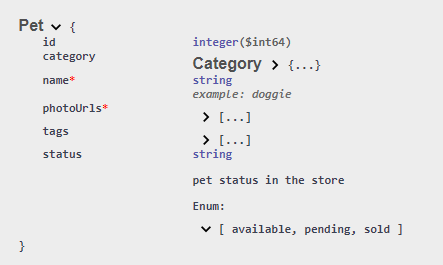Recently, I have seen several questions like “what’s the difference between JSON-LD and JSON Schema” or “can I use JSON Schema and Schema.org”. I come from a linked data background (which is close to the world of Schema.org) but have recently started using JSON Schema a lot and I have to admit that there is no trivial answer to these questions. There is the obvious similarity in the standard names like “Schema” and “JSON”. If you compare the Schema.org page for Person to this example on the JSON Schema page, you have to admit that they kind of look alike. Combine this with the fact that Schema.org touts JSON-LD, which — by design — very much looks like regular JSON completes the confusion. So there definitely are enough reasons to write this article.
JSON Schema
JSON Schema is to JSON what XML Schema is to XML. It allows you to specify the structure of a JSON document. You can state that the field “email” must follow a certain regular expression or that an address has “street_name”, “number”, and “street_type” fields. Michael Droettboom’s book “Understanding JSON Schema” illustrates validation quite nicely with red & green examples.
The main use case for JSON Schema seems to be in JSON APIs where it plays two major roles:
- Clients and servers can validate request and response objects in a generic way. This makes development a lot easier, since the implementation can “outsource” these checks to a standard component. Once a message passed the validation, you can safely assume that the document adheres to the rules.
- As with any API, documentation is key when developers write code that uses it. JSON Schema is increasingly used to describe the structure of requests and responses by embedding it in an overall API description. Swagger is probably the most prominent example of this paradigm. Consider the pet-store example. Scroll all the way down on the page and you see this JSON Schema definition of “Pet”, which is a basic element in requests and responses of this API (you can find the actual JSON Schema embedded in the raw Swagger file — note that currently there are still some differences between the OpenAPI specification and JSON Schema which will be resolved with OpenAPI 3.1).

As with all things related to code, reuse is a good idea. JSON Schema has the ability to import schemas using the $ref keyword. There are also efforts to share schemas. JSON Schema Store is one example. Its main use case is to support syntax highlighting for editors, for instance when editing a swagger file. At the time of writing, it contains over 250 schemas including — drum-roll please / you certainly guessed it — Schema.org. These describe things like Action and Place. So the idea could be to centrally define JSON Schema building blocks that can be re-used in different APIs, making it easier to consume them, maybe even to the point where intelligent software can interact with APIs automatically. But before we get carried away, let’s have a look at Schema.org.
#schema #swagger #json-ld #json-schema
